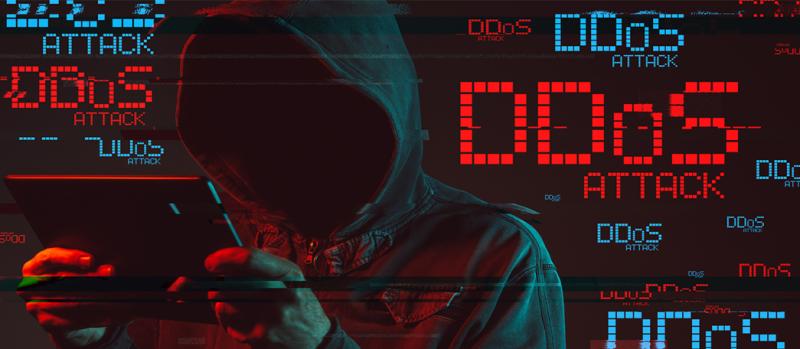What you need to know about cyberattacks in 2023: what they are and how to fight them
Cybercrime is developing at a geometric progression alongside information technology. Fraudsters are becoming increasingly sophisticated, and security services often find themselves unprepared for new types of attacks. For businesses, combating cybercrime, protecting data and software, are becoming strategically important issues that require appropriate funding. In addition, companies are increasingly hiring IT security department heads (CISOs), whose responsibilities include a wider range of tasks.
Cyberattacks: who, against whom, and why
The development of cybercrime is closely tied to information technology. The level of preparedness of hackers is increasing, and they are finding new ways to circumvent security systems. Therefore, protecting data and software is becoming a strategically important problem for businesses, requiring its own line item in the budget, as well as an increase in the number of employees responsible for IT security (CISOs), whose responsibilities are constantly expanding.
It seems that the battle against cybercrime has already been lost, since even intelligence agencies of different countries are ordering attacks on government organizations of other states from anonymous groups. Every year, the number of cyberattacks and the amounts paid to hackers increase to record levels. In 2020, companies paid only $350 million, three times more than in 2019. CNA paid a record $40 million after losing control of its database and network access for top managers for two weeks.
In addition, in October 2021, Check Point reported a sharp increase in the number of cyber attacks worldwide over the year by 40%. For every 61 organizations, there is one that hackers target every week. Attacks on corporate networks have increased by 1.5 times compared to 2020. Hackers are particularly interested in educational and research sites, government and military sites, as well as sites in the communications industry.
The motives of hackers causing problems for companies are diverse. They can range from romantic to political. Stolen data can be sold on the darknet, demanded ransom from the owners, or made available to the public. Hacks can be done out of revenge, to satisfy vanity, or to influence global processes.
Trends
The description of cybersecurity trends is based on observations of technological progress and changes in people's everyday lives.
Due to the shift to remote work, companies are increasingly focusing on the use of cloud technologies and serverless architecture. However, this also increases vulnerability to attacks on microservices used by cloud service providers.
Additionally, in October 2021, Check Point reported a sharp increase of cyber attacks worldwide over the year by 40%. For every 61 organizations, there is one that is attacked by hackers every week. Corporate network attacks increased by 1.5 times compared to 2020. Attackers are particularly interested in educational and research websites, government and military sites, as well as sites in the communications sector.
The motives of hackers causing problems for companies are diverse, ranging from romantic to political. Stolen data can be sold on the dark web, demanded ransom from owners, or published for free access. Hacks can be carried out for revenge, to satisfy vanity, or to influence global processes.
Trends
The description of cybersecurity trends is based on observations of technical progress and changes in people's daily lives.
Due to the shift to remote work, companies are increasingly focusing on the use of cloud technologies and serverless architecture. However, this also increases vulnerability to attacks on microservices used by cloud service providers.
Another trend that can be observed is the spread of deepfakes, which can be used to compromise real people or biometric access control systems.
It is also important to consider the growing vulnerability of supply chain management systems, related to the flow of goods, data, and finances, which can be compromised and affect business.
The Zero Trust model is also becoming increasingly popular. It assumes that every user or device requesting access to the system must undergo re-authentication to protect the system from unauthorized access.
Finally, it is important to note that more and more cybersecurity projects will be executed by cross-functional teams, in which participants are capable of developing websites and applications, as well as setting up infrastructure and maintaining the security of the codebase. It should also be noted that the increase in cybercriminal payouts indicates the need to improve the cybersecurity system.
Cybersecurity: the origin of threats, their types, and how to avoid them
Cybersecurity is an important topic that everyone should know about. In our modern lives, we are increasingly dependent on computers, mobile devices, and the internet, which makes us vulnerable to cyber attacks and threats. What are the threats that can arise, and how can they be avoided?
Even the most experienced and professional developers can make mistakes that can become a door for cybercriminals when creating computer programs and websites. Some of these errors can occur during the design phase when algorithms and interface component interactions need to be coordinated. For example, incorrect server bandwidth configuration can lead to its collapse when there are many users. Implementation stage errors can lead to the need for a complete application overhaul. Finally, errors at the hardware and software configuration stage can lead to vulnerabilities, such as simple password hacking.
To avoid these threats, developers need to write clean and secure code that must be tested and checked for errors. It is also necessary to ensure the security of your software and periodically check it for vulnerabilities. Additionally, users need to be educated about internet security and protection systems need to be set up to defend against cyber threats. Cybersecurity is not just a buzzword, it is an important aspect of our lives, and we all need to learn how to protect our computers and data from potential cyber threats.
Let's discuss the most common types of attacks
Phishing
Phishing is one of the most popular ways of unauthorized access to data. Scammers create websites that look just like the original ones and under the guise of legitimate reasons, collect confidential data such as bank card numbers, passwords for email or other services, account information, etc. To gain the victim's trust, hackers can send emails on behalf of high-ranking officials or international organizations fighting cybercrime.
Phishing is constantly evolving, but its goal remains the same: to deceive you and profit off of your savings. To avoid this, carefully check the website address to make sure it is the site you want to visit and not a fake one. Also be cautious if you are offered special deals that will only be valid for a few minutes and asked to provide your card number and CVV code. Only your attention and vigilance can protect you from phishing.
DDoS (Distributed Denial of Service)
The conversation will be about a DDoS attack, which involves attempting to overload a server with a large number of requests. The hacker uses a botnet network, combining virus-infected computers or IoT devices to simulate a huge number of requests to the server, which it is unable to process. As a result, regular users are unable to access the site because the server is occupied with fake requests.
You can protect yourself from a DDoS attack if the server architecture is initially configured for high loads. If you are creating a project for a large audience, your server should be able to handle a large number of requests. However, if you are working on a small project, it may be more difficult to protect yourself from a DDoS attack.
Brute Force
Phishing is constantly changing, but its goal remains the same: to deceive you and profit from your savings. To avoid this, carefully check the website address to make sure it's the real site you want to visit, not a fake one. Also, be cautious if you're offered special deals that will only be valid for a few minutes and asked to provide your card number and CVV code. Only your attention and vigilance can protect you from phishing.
DDoS (Distributed Denial of Service)
The conversation will be about a DDoS attack, which involves attempting to overload a server with a large number of requests. The hacker uses a botnet network, combining virus-infected computers or IoT devices to simulate a huge number of requests to the server that it cannot handle. As a result, regular users cannot access the site because the server is busy with fake requests.
You can protect yourself from a DDoS attack if your server architecture is initially configured for high loads. If you're creating a project for a large audience, your server should be capable of handling a large number of requests. However, if you're working on a small project, protecting yourself from a DDoS attack may be more difficult.
Brute Force
Brute force is a type of hacker attack that involves attempting to hack a system or individual secure sections by trying various combinations of characters in search of the correct "login-password" pair. Typically, when registering on a website or app, users are asked to create a complex password to protect themselves from such attacks. If you've ever forgotten a password and received a warning that you have only a few attempts left to enter the correct password, then you know one of the simplest measures to protect against brute force attacks. After several unsuccessful attempts, the system begins to suspect that this is a malicious actor trying to guess the password and takes appropriate measures.
IDOR Vulnerability (Insecure Direct Object Reference)
An IDOR vulnerability arises when any user can access URL addresses of pages, files, or directories that should not be publicly available. If a malicious actor adds additional parameters to such an address, such as /admin, they can gain access to private data or functionality intended only for administrators. As a result, a malicious actor can change data, send messages on behalf of other users, transfer money, and so on. To avoid an IDOR vulnerability, it is necessary to configure access rights and user roles to restrict access to confidential information and functionality only to authorized users.
XSS Vulnerability (Cross Site Scripting)
Cross-Site Scripting (XSS) is an attack that allows HTML tags or JavaScript code to be injected into a website page using vulnerabilities. This type of attack is often used on dynamic websites and occurs when developers do not filter data entered by users on the site. To carry out the attack, a hacker only needs to insert a script into a message field on a forum and publish it. Once other users open this page, the script will be executed and the attack will begin.
XSS vulnerability is divided into three types depending on where the code is stored: stored - if it is stored on the server and executed automatically, reflected - if it is contained in a link, and DOM-based - if it is executed in the browser. As a result of the attack, the hacker can modify pages on the site or inject code that generates views on other sites or mines cryptocurrency. That is why your computer may be running slowly lately.
Protection against XSS is disabling malicious JavaScript code. This is done using mnemonics: HTML symbols are replaced with their equivalent, and the page stops interpreting the text entered by the hacker as code. However, it is also possible to take even more radical steps and simply filter out all tags.
SQL Injection
SQL injection is another way of hacking a website, where a malicious user can gain access to a database by using user input on the webpage. The hacker can modify GET or POST requests, as well as cookies, to gain access to the database, especially if it uses MySQL architecture. To prevent such attacks, it's important for developers to carefully monitor request responses and filter user input data for special characters (escaping), as we learned from the previous example.
Cyber Attack Prevention and Treatment
Sometimes it's useful to take the right steps to protect your data and avoid the undesirable consequences of cyber attacks. In addition, it's also important for maintaining the reputation and trust of customers. The following measures can help you reduce the risks of cyber attacks:
- Using complex and secure passwords that do not contain personal information such as date of birth, place of work, etc.
- Disabling the auto-fill feature for login and password fields.
- Avoiding open Wi-Fi networks.
- Implementing two-factor authentication.
- Regularly clearing cookies.
- Installing and using reliable antivirus software.
- Updating software to eliminate vulnerabilities.
- Monitoring the system for suspicious activity.
- Training staff on cybersecurity basics and complying with data security rules.
- Regularly conducting system audits for vulnerabilities and risks.
Software Updates
Like any other software, your development tools eventually reach their expiration date. As we've already discussed, vulnerabilities in software can appear at all stages of development, from design to configuration. Major updates to operating systems and libraries often result in the publication of vulnerability reports. Developers quickly respond to such news by releasing patches that fix vulnerabilities. It's important to keep track of regular software updates and install all available patches between major updates.
Penetration Testing
Penetration testing is a process in which a tester creates attack scenarios and configures tools to manually test a product and identify unknown vulnerabilities. This measure can be applied to individual functional parts of the product as well as to the entire network. Testing individual parts is cheaper and more commonly used than testing the entire network or product as a whole. However, it should be noted that penetration testing is an expensive and time-consuming procedure that is recommended to be used only on large projects with a high risk of cyber threats. It is recommended to carry out such testing by highly qualified specialists at least once a year.
Vulnerability Scanning
Vulnerability scanning and penetration testing are two different methods, although they are often confused. Vulnerability scanning includes the automatic detection of network and software problems such as routers, firewalls, servers, and other devices. This method can identify potential threats in the system, but does not detect the vulnerability itself. Unlike penetration testing, vulnerability scanning is cheaper and can be performed by a network administrator.
Threat Hunting
Threat hunting is a method of searching for cyber threats in which a specialist creates hypotheses about how cyberattacks may be conducted on the system and then tests them to find traces of intrusion. Hypotheses are based on information about the state of infrastructure, vulnerability scanning results, reconnaissance reports, security news, and other internal and external information.
Conclusion
You know better than anyone the scale and complexity of your business, as well as what data can attract malicious actors. It is impossible to cover all possible cyber threats and vulnerabilities for every programming language or technology, such as PHP, JavaScript, React, Bitrix, Wordpress, Symfony, etc., in one article. Our goal was to generalize the problem as of 2023 and instill the idea of the need to comply with cybersecurity measures to avoid huge expenses and damage to the reputation of your business. It should be understood that cybersecurity should become your daily routine.







